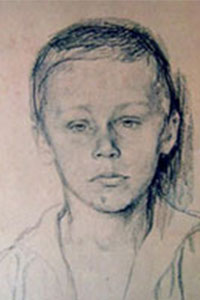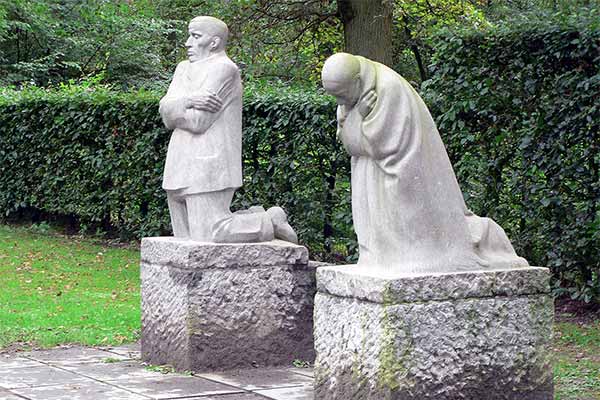Subtotal: $
Checkout
It was the end of the first summer of the Great War. In Berlin, a well-known young artist and sculptor by the name of Käthe Kollwitz was losing sleep not only over the general madness that was sucking millions of families across Europe into a deadly whirlpool, but over the imminent conscription of her son Peter. Writing in her diary on August 27, 1914, she asked:
Where do all these women find the courage to send their dear ones to the front to face the guns, when they have watched over them all their lives with such loving care? I fear that the despondency which is bound to follow will be all the blacker for the present mood of exaltation...
A month later she wrote:
The idea of mere boys going into battle strikes me as senseless. It is all so pointless, so insane...It’s enough to drive one to despair.
Still, when the call of duty sounded, she wiped away her tears and sent Peter off to Belgium. He was killed there that very fall, after two days at the front.

In December 1914, two months after his death, Kollwitz decided to create a memorial to him. As time went on, she tried first one design and then another, but nothing satisfied her.
Her creative meandering continued, off and on, for more than fifteen years. Part of the challenge was the sheer magnitude of her loss—art being a poor match for a mother’s grief. But part of it was also her conflicted feelings toward the war that had swallowed him and a staggering two million other German soldiers.
A pacifist at heart, Kollwitz agonized over whether her position dishonored the sacrifice her child had made. A restless self-critic, she had the gnawing feeling that she was guilty of an earlier, far more serious betrayal: allowing him to join up.
Finally, in 1931, she completed what she felt was a fitting tribute: a double sculpture of herself and her husband mourning on their knees. The figures, she said, represented her entire generation, asking the young’s forgiveness for having led them into war.
In 1933 Hitler came to power, and Kollwitz was punished for her “unpatriotic” remorse and for her art, which Nazi guardians of culture pronounced “degenerate.” Her works were removed from galleries and public places and, though famous as the first female member of the Prussian Academy of Arts, she was ousted from that august institution.

Käthe Kollwitz, The Grieving Parents, a memorial to Kollwitz' son Peter
She suffered personally as well as professionally. In 1940 her husband, Karl, died, and in 1942 her grandson, a soldier, was killed. She herself fled Berlin, taking refuge first in one town, and then another.
Kollwitz passed away on April 22, 1945, just eight days before Hitler’s suicide brought an end to World War II—a maelstrom even more terrible than the one that had taken her son.
Amazingly, she did not die hopeless, as this passage (one of the last entries in her diary) shows:
One day, a new ideal will arise, and there will be an end to all wars. I die convinced of this. It will need much hard work, but it will be achieved... The important thing, until that happens, is to hold one’s banner high and to struggle... Without struggle there is no life.
Already a subscriber? Sign in
Try 3 months of unlimited access. Start your FREE TRIAL today. Cancel anytime.








Lisa Anne
This article made me weep and left my heart in sorrow and in pain. For the senseless act of war...I Pray for peace of their souls! Amen
Charles Scott
This well written article sums up the history of the first 50 years of the 20th century. The citizens of the great powers allowed themselves to be ruled by madmen and the unscrupulous who had no respect for life.
Rich
This is one of the most uplifting pieces i have read in a v er y long time. I am going to copy it and keep it in my library. Thank-You for it and keep up the great works.